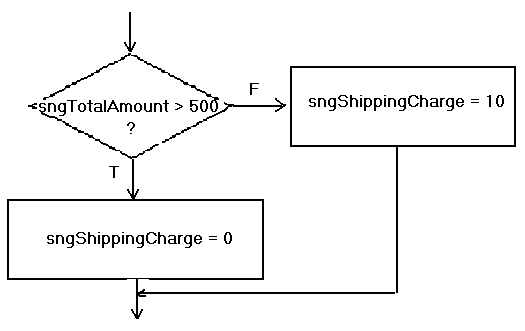Simple selection executes its instruction(s) when the condition is met, depending on the result of a condition being true or false. If the condition is false, then the entire If statement is skipped.
If [condition] Then
[instruction(s)]
End If
sglShippingCharge = 0
Else
sglShippingCharge = 10
End If
If [condition 1] Then
[instruction(s) 1]
ElseIf [condition 2] Then
[instruction(s) 2]
ElseIf [condition 3] Then
[instruction(s) 3]
End If

If [condition 1] Then
[instruction(s) 1]
ElseIf [condition 2] Then
[instruction(s) 2]
ElseIf [condition 3] Then
[instruction(s) 3]
End If

Combined Conditions
More than one condition can be tested in If clause.
If (condition 1) Logical Operator (condition 2) Then (instruction) End If |
If (sglTotalAmount > 100) And (blnLoyalCustomer) Then sglShippingCharge = 0 End If |
In the above example, blnLoyalCustomer is a Boolean data type which contains either True of False as data value. So, if blnLoyalCustomer = True had been executed, blnLoyalCustomer will have True as its value. Therefore, blnLoyalCustomer won't need a comparison operator.
 ශිල්ප 64
ශිල්ප 64